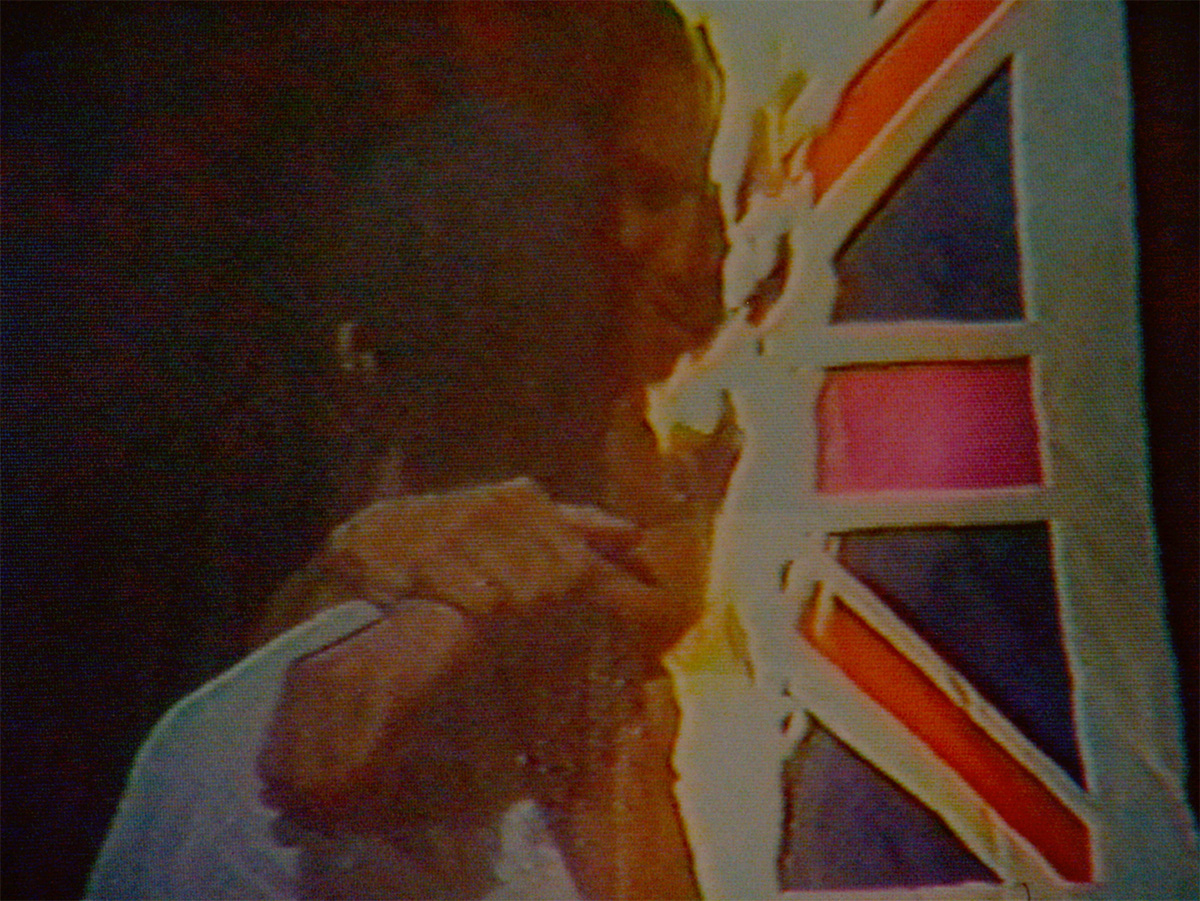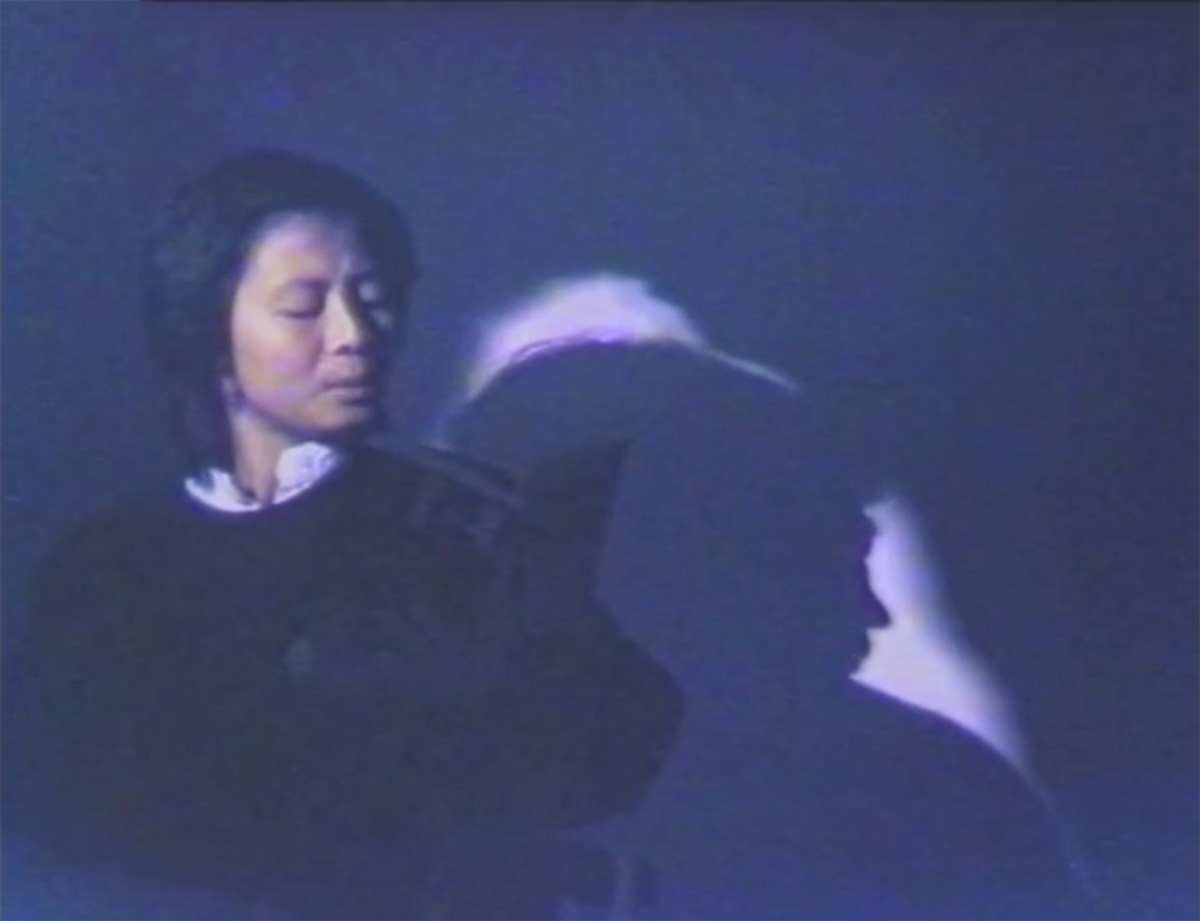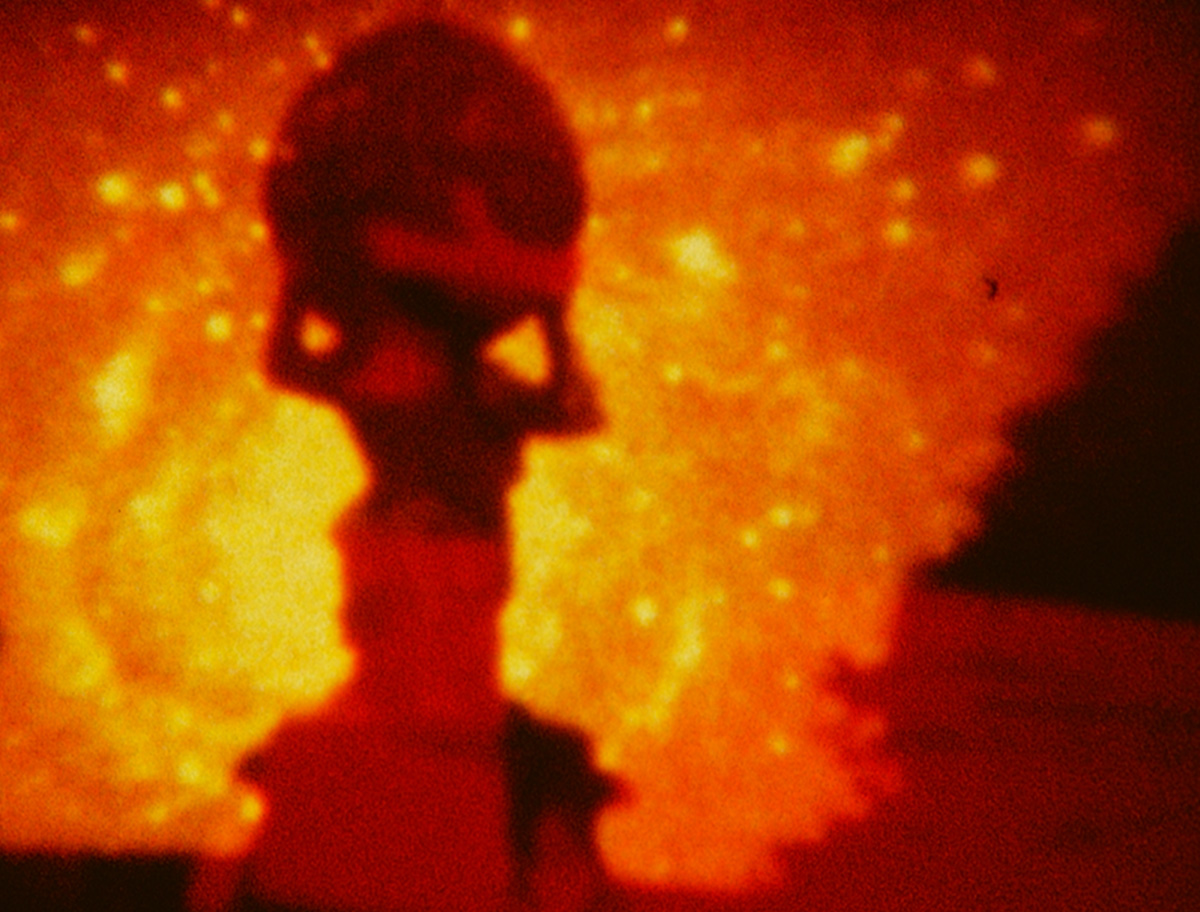SCREENING THREE - Territories / Emergence / In the Shadow of the Sun
Introduced by Kodwo Eshun & Louis Henderson
Courtisane is een platform voor film en audiovisuele kunsten. In de vorm van een jaarlijks festival, filmvertoningen, gesprekken en publicaties onderzoeken we de relaties tussen beeld en wereld, esthetiek en politiek, experiment en engagement.
Courtisane is a platform for film and audiovisual arts. Through a yearly festival, film screenings, talks and publications, we research the relations between image and world, aesthetics and politics, experiment and engagement.
Introduced by Kodwo Eshun & Louis Henderson

Territories bekijkt de geschiedenis van het carnaval in Groot-Brittannië als een subversief fenomeen en ziet culturen en talen als bakens die de grenzen moeten aangeven van zowel metaforische als bestaande gebieden. De film plaatst origineel en archiefmateriaal naast elkaar en laat ze regelmatig overlappen: beelden van feestelijke straten en hossende carnavalsmenigten, van politiebewaking, van witte en zwarte Britse mannen en vrouwen die verlangende en vervreemde blikken uitwisselen terwijl ze strijden om de sociale ruimte, en van de desolate tekenen van stedelijke verlatenheid en verwaarlozing.
“In Territories, the growing power of organized sound and music counterpoints the visual montage and is articulated with it aesthetically. Our narrators sit at a Steenbeck editing machine, underscoring their responsibilities as mediators, but the DJs and MCs who make up People’s War are not positioned at that distance. Under the time-stretching impact of what we must call a dub aesthetic — one grasping the shock that only the unintelligible can communicate — the film demands to be encountered as a remix. Its repeated phrases, oscillations, and orchestrations depart from reggae; their relocation to the gray northern metropolis has opened them to the emergent power of hip-hop and what we used to call ‘electro’. ... Here is the demotic pulse of a truly populist modernism and we do ‘Feel Like Jumping’. Its dissident spirit is propelled by the energy of ritual repetition, of ceaseless versioning. “ (Paul Gilroy)

Pratibha Parmar maakte haar eerste videowerk met de hulp van Black Audio Film Collective, als “manier om iets te vertellen over de opkomst van Zwarte vrouwen en Aziatische vrouwen als culturele kunstenaars en cultuuractivisten”. Emergence verweeft de stemmen van vier vrouwen van kleur uit de diaspora: Audre Lorde, Mona Hatoum, Sutapa Biswas en Meiling Jin. Door diaspora-identiteiten tegen een achtergrond te plaatsen van ruis en stilte (de soundtrack is gemaakt door Trevor Mathison), van vervreemding en fragmentatie, streeft Emergence naar de re-integratie van sprekende, performende subalterne subjecten.
“Emergence is a performative multi-voiced and multi-enacted ritual visual poem that moves women of color, as the voice-over states, ‘from yesterday’s silence to tomorrow’s dreams’. Woman as speaking subject, gazing subject, interrogating corporeal performative subject owns spatiality in an arena that once depended upon her invisibility, her silence, and the suppression of her performing body. Emergence works to recover subjected forms of knowledge. Parmar invokes a performative ethnographic to move across the landscapes of colonial division, in the process underscoring the need for an ‘ethnographic ear’, as defined by Anglo-Asian cultural critic Jenny Sharpe. Sharpe finds that ethnographic listening ‘exists between and not within cultures ... beside every native voice is an ethnographic ear’.” (Gwendolyn Audrey Foster)

In the Shadow of the Sun komt voort uit de belangstelling van Derek Jarman voor alchemistische processen als metafoor voor het manipuleren van Super 8-film. Oorspronkelijk heette deze film English Apocalypse — de uiteindelijke titel is afkomstig uit een zeventiende-eeuwse alchemistische tekst, waarin hij wordt gebruikt als synoniem voor de steen der wijzen: de lang gezochte stof die onedele metalen in goud en zilver kon veranderen. De film, met een soundtrack van Throbbing Gristle, was bedoeld als aanzet tot een soort van ‘ambient video’, dat net als ambient muziek was ontworpen om een omgeving te verrijken.
“In the Shadow of the Sun is a fire film, an English Apocalypse... related to John Dee and alchemy where the distinction between words and things is obscured by the identification of symbols with things... The images are fused with scarlets, oranges and pinks. The degradation caused by the refilming of multiple images gives them a shimmering mystery/energy like Monet’s ‘Nympheas’ or haystacks in the sunset. There is no narrative in the film. The first viewers wracked their brains for a meaning instead of relaxing into the ambient tapestry of random images. The language is there and it is conveyed — and you don’t know what you have to say until you’ve said it. You can dream of lands far distant.” (Derek Jarman)